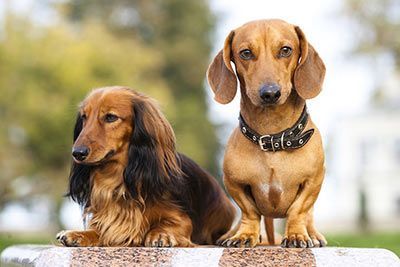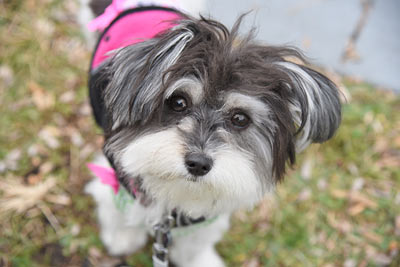Husky
Siberian Husky Dog Breed Information
| Size | 20-24 inches (50-60 cm) |
| Weight | 33-62 lbs (15-28 kg) |
| Origin | France, Belgium |
| Color | White with spots; multi-colored |
| Lifespan | 12-15 years |
| Suitable As | Family dog |
| Personality | Adventurous, attentive, independent, sociable, stubborn |
| Exercise | |
| Drooling | |
| Shedding | |
| Grooming |

Breed Characteristics
Huskies have beautiful eyes and a pretty, dense coat with gorgeous markings. Huskies have a very loving, kind and open nature. They are always happy and cheerful. Also, they are also very lively dogs who especially love to go for long distances. The huskies' favorite thing to do is run. They also like digging and are very curious. A dangerous combination that made it well-known as "escape artists". It almost seems like they can set themselves free like the great escape artist and illusionist Harry Houdini. While this sounds funny at the beginning, you soon realize that this could be dangerous, as there are too many roads and too many cars - so you should pay close attention to unlocked doors and check fences for gaps.
Discipline and Training
They are extremely friendly, open-minded and obedient dogs, but their training requires a lot of skill and experience. They like to test the rules. It’s important that you don’t give in, simply calmly and clearly show them who the leader of the pack is. That requires a lot of discipline. Huskies are best with experienced dog owners.
Top Activities
Hiking, Biking

Pros and Cons
Pros
- Easy to train
- Gets on well with other dogs
- Doesn’t drool
- Good for sporty people
Cons
- Not a beginner dog
- Medium shedding
- Howls a lot
- Needs lots of exercise
- Not a good guard dog
- Doesn’t get on well with small animals

Appearance
Not every Husky has blue eyes. They can have brown eyes, too - or a blue and a brown one! They usually have white fur on their paws, legs, face and tail. Most common is a combination of black and white, but it also can be red and white, gray and white. The most exciting thing about its fur are the awesome markings on their faces - each Husky looks absolutely unique!
Health and Care
Twice a year, when they change their coat, huskies shed a considerable amount of hair. Its coat should be brushed well at least once a week.
History and Origin
At the beginning of the 20th century, the dog breed came from Siberia to Alaska. It is assumed that the name Husky derives from Esky, which was a nickname for the Eskimos' dogs. Esky eventually became Husky.

Fun Facts
Howling
Huskies rarely bark. But they do howl. You need to know that.
Huskies Are Lifesavers
Huskys can handle colder temperatures easily, because they have a very warm coat. This is why Eskimos use them as sled dogs. Let us tell you a heroic story to depict how great their physical and mental power is.
In 1925, there was an outbreak of a diphtheria, an infectious, lethal disease, in a city in northwestern Alaska. The city was snowed under. The only way to go there and deliver the life-saving serum were dog sleds. Within less than 6 days, several dogsled relays covered 674 miles (1,085 km) to reach the city. The temperature was between -50 and -85 degrees Fahrenheit (-46 to -65 degrees Celsius)! Additionally, they also had to fight with strong wind and snow. Neither dogs nor humans could hardly see anything.
A Husky named Balto, the lead dog on the last part of the route, became particularly famous. The lead dog on the toughest and longest part of the route was a Husky, too. The sled covered a total of 91 miles (146 km) at a stretch. Without Togos' extraordinary sense of orientation and smell they would have never have reached the city.
Comparable Breeds



































